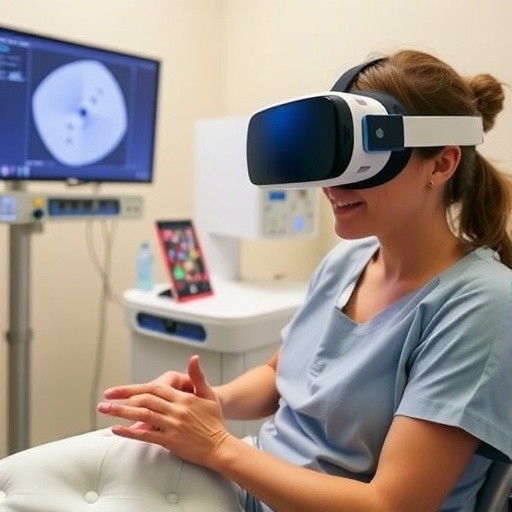In a groundbreaking study published in the International Journal of Legal Medicine, researchers have delved into the complex realm of genetic anomalies impacting paternity testing, focusing specifically on the phenomenon known as copy-neutral loss of heterozygosity (CN-LOH) on chromosome 2. This study represents a pivotal advancement in forensic genetics, highlighting a critical factor that can challenge traditional assumptions in parentage verification processes.
Paternity testing traditionally relies on the presence of heterozygous markers—genetic loci where two different alleles are present—to establish biological relationships. The detection of identical alleles inherited from both parents typically confirms kinship. However, CN-LOH introduces an additional layer of complexity, whereby large chromosomal regions become homozygous without any accompanying change in the number of DNA copies. This subtle genetic event can mimic or mask true biological relationships, potentially generating inconclusive or misleading results in forensic analyses.
Xu, Huang, Liang, and colleagues employed high-resolution genetic profiling techniques to characterize CN-LOH on chromosome 2, an autosome known for its gene-rich regions critical in multiple biological pathways. By scrutinizing paternity test cases exhibiting anomalies, the team identified numerous instances where CN-LOH caused a loss of heterozygosity without deletion or duplication, thereby confounding standard genotyping interpretations. Their rigorous bioinformatic and molecular analyses underpin the study’s key findings.
The methodology involved microarray-based comparative genomic hybridization and single nucleotide polymorphism (SNP) array analyses, enabling the detection of subtle chromosomal aberrations invisible to conventional karyotyping. The use of these advanced genomic tools uncovered that CN-LOH regions spanned several megabases on chromosome 2, effectively erasing allelic diversity critical for accurate paternity conclusions. This nuance is paramount as conventional short tandem repeat (STR)-based analyses may fail to flag these homozygous stretches.
Intriguingly, the study sheds light on the underlying mechanisms by which CN-LOH arises. Mitotic recombination and gene conversion events during early embryonic development can cause large-scale segmental uniparental disomy, where both chromosome copies derive from a single parent’s homolog. This creates a genetically uniform stretch of DNA, complicating the inheritance patterns expected under Mendelian principles and challenging forensic scientists’ ability to make definitive genetic calls.
Furthermore, the researchers discuss the practical implications for forensic casework. In scenarios where CN-LOH is not anticipated or accounted for, the paternity test results may falsely exclude or inclusively accept alleged fathers. This can lead to grave judicial errors, affecting child custody decisions, inheritance disputes, and even criminal investigations. Therefore, forensic laboratories are urged to implement additional genomic scrutiny when encountering genotype inconsistencies, especially on chromosome 2.
The study also emphasizes the importance of integrating next-generation sequencing (NGS) platforms to complement traditional STR typing. NGS offers unparalleled resolution and can reveal CN-LOH regions more conclusively. However, interpreting these data requires sophisticated bioinformatics pipelines and a deep understanding of genomic architecture. The authors advocate for developing standardized protocols and databases cataloging CN-LOH occurrences to strengthen forensic reliability worldwide.
Beyond forensic applications, the insights gained carry relevance for broader medical genetics. Chromosome 2 harbors genes implicated in oncogenesis, neurodevelopmental disorders, and immune regulation. CN-LOH in somatic cells has been associated with certain cancers, while germline manifestations might impact disease susceptibility. Thus, the forensic findings open avenues for translational research into chromosome 2’s role in health and disease.
The social and ethical dimensions of this discovery are equally profound. As genetic technologies permeate legal systems globally, ensuring the accuracy and fairness of genetic evidence becomes paramount. The realization that CN-LOH can confound paternity tests highlights the need for educating legal practitioners, policy-makers, and the general public about the limitations of genetic testing. Transparency about these nuances will enhance trust and prevent misuse or misinterpretation of genetic data in courts.
This research also underscores the necessity for forensic scientists to maintain vigilance and update methodologies in response to emerging genetic phenomena. With advances in genomic science rapidly evolving, continuous professional development and interdisciplinary collaboration between geneticists, bioinformaticians, and legal experts are critical. Only through such synergies can the forensic community safeguard the integrity of genetic evidence.
Moreover, the study offers potential solutions to mitigate CN-LOH-related ambiguities. By incorporating genome-wide analyses and complementing them with familial linkage studies, forensic experts can achieve a more holistic view of genetic inheritance patterns. This comprehensive approach may significantly reduce false negatives or positives in paternity testing, thereby bolstering evidentiary confidence.
The authors call for expanding research to assess the prevalence of CN-LOH across diverse populations, as genetic backgrounds may influence susceptibility to these chromosomal rearrangements. Population-specific databases would aid in refining forensic interpretations and customizing analytical workflows to local genetic landscapes. This personalized approach aligns with the broader trend toward precision medicine and forensic genomics.
In conclusion, Xu and colleagues’ study represents a significant leap forward in uncovering the intricate relationship between chromosome 2 CN-LOH and forensic genetics. By illuminating a hidden source of genetic complexity, their work compels the forensic community to reconsider and enhance current paternity testing paradigms. The adoption of comprehensive genomic techniques and heightened awareness of CN-LOH will ultimately strengthen the pursuit of justice through science.
As paternity testing remains a cornerstone of legal and humanitarian processes, this research serves as a timely reminder that genetic science, while powerful, must continually evolve to address its own limitations. The integration of cutting-edge genomics with forensic applications promises a future where biological relationships can be determined with greater accuracy, fairness, and confidence than ever before.
Subject of Research: Genetic analysis of chromosome 2 copy-neutral loss of heterozygosity in paternity testing
Article Title: Genetic analysis of chromosome 2 copy-neutral loss of heterozygosity in paternity testing
Article References:
Xu, G., Huang, Y., Liang, J. et al. Genetic analysis of chromosome 2 copy-neutral loss of heterozygosity in paternity testing. Int J Legal Med (2025). https://doi.org/10.1007/s00414-025-03638-4
Image Credits: AI Generated
Tags: autosomal chromosome characteristicsbiological relationship verificationChromosome 2 loss of heterozygosityCN-LOH in forensic geneticscopy-neutral loss of heterozygosityforensic analysis challengesgene-rich regions in geneticsgenetic profiling techniqueshigh-resolution genetic analysisimpact of CN-LOH on kinship determinationinconclusive paternity test resultspaternity testing anomalies





